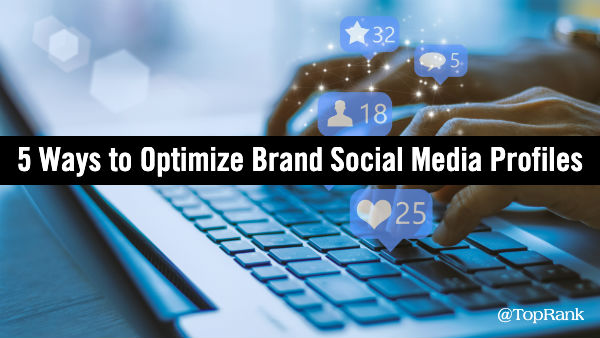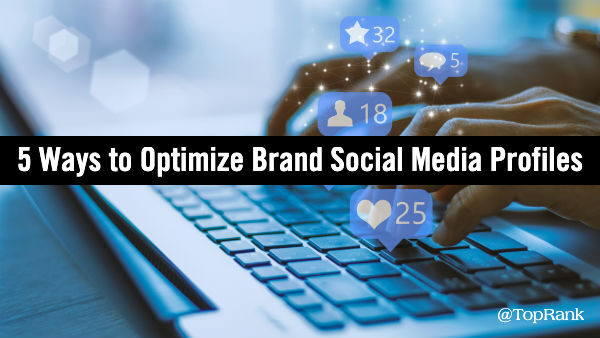
As a concerned consumer, I have to admit that I’m ambivalent about social media. On the one hand, it keeps me connected with friends and family. And it provides a platform for those whose voices have been marginalized. On the other hand, it can be a 24-7 outrage machine where I can ruin my blood pressure arguing with strangers.
As a marketer, however, I wholeheartedly celebrate social media. Brands have never had such rich opportunities to interact with customers and potential customers. They’ve never been able to so easily display what the brand is about, what it stands for, and how it can bring value to people.
This is especially important now that virtually all B2B business is done digitally and customers are using digital channels more than ever to find information, learn about brands and solutions.
If your enthusiasm for your brand’s social media has waned, though, I get it. Social has been around for over a decade now, and it’s become just another channel for a lot of us. But if your brand is treating social as a box to be checked, rather than an opportunity to be seized, it’s time to take an interest again. With the pandemic shifting in-person marketing to digital, more buyers are online than ever before.
You can start with the basics, like refreshing your brand’s profile pages. With a few adjustments, you can make these pages more welcoming to your audience and more reflective of your brand’s personality and values. Beyond that, freshen up images, ensure links are working, information is accurate and up to date.
But let’s go beyond the basics. For that, here are my top 5 tips, as well as some platform-specific suggestions.
1. Ditch the Corporate-Speak
This first one may be the hardest for B2B marketers who have been in the game for awhile. Corporate marketing has a language unto itself, and if your target audience isn’t other corporate marketers, you’re likely getting lost in translation.
Start by eliminating buzzwords. Any grand-sounding, but ultimately empty, words and phrases can go. Look especially for those phrases that are true of every business, but that some brands tout as differentiators. Here are a few to look out for:
- Data-driven. Are there businesses who base all decisions on Tarot card readings?
- Results-oriented. As opposed to intentions-oriented, I suppose.
- Best-in-class. If everyone is best in class, no one is.
- Disruptive. This is a bold yet nebulous claim, and an overly common one.
- Customer-first. This will differentiate you from all those businesses who put people who are NOT their customers first.
- Industry-leading/Thought leader. These are vague claims as well, and also are titles that should generally not be self-granted.
In general, strive to talk like a person, rather than a corporate entity. Even on LinkedIn, where a higher level of professionalism is expected, you will attract more attention with a warm, human voice.
2. Eliminate Problematic Language
By “problematic,” I mean, “likely to cause offense to historically oppressed groups of people.” This may not be a popular topic with some folks, but getting rid of problematic language is absolutely essential for modern marketing. The risk is alienating not just the offended group, but whole swaths of your target audience who prefer more inclusive language. And you risk attracting the wrong sort of audience, too.
What follows is just a few excerpts from a very long list:
- Gurus/Ninjas Both of these titles have real meaning and significance to their respective cultures, and using them as part of a brand descriptor or job title is a bad look.
- Tribe/Tribal/Tribalism Tribal connections are deeply meaningful to Native Americans, so it’s better to find another way to refer to your group. Double yikes if you’re the “chief” of your “tribe.”
- Circle the Wagons/Pow-Wow Not only are these examples of archaic language that somehow persists in corporate-speak, they’re both offensive to indigenous folks.
- Crazy/Insane It’s best to avoid words that describe mental illness in a trivial fashion. Your brand can be “passionately” devoted to its customers without being “crazy about” or “insanely focused.”
I know that some people call this type of language awareness “politically correct,” generally with an eyeroll. But in reality, it’s simply inclusive. If part of your brand identity is caring about marginalized people (and I hope it is), it’s important to make your language reflect that.
3. Say Why You’re Here
Okay, the language policing part of the blog is over. We can all breathe a little easier now. On to the next big, easy question: Why is your brand on social media?
Maybe it’s not so easy a question after all, but it’s one that you need to answer in a way that will satisfy your audience. Use your profile to explain why your brand is on a particular site, and what types of interactions you’re hoping for with your audience.
I particularly like how Dell does this within the strict character limits of Twitter’s profile pages. Their main page says, “Official News from Dell: Delivering technology solutions that enable people everywhere to grow & thrive. Need support? Contact @DellCares.”
In 137 characters, they tell us:
- What the account does (Official News from Dell)
- What the brand does (Delivering technology solutions…)
- What you might be looking for instead of this account (@DellCares for support)
On every one of your brand’s social media platforms, make sure to include all this information as your calling card.
4. Focus on What You Do for Your Audience
It’s easy to make your social media profile into a self-promoting Greatest Hits page. That’s true of personal pages, and equally true for brands. We won these awards. We got good reviews in this publication. We have sold to this many clients.
A little bit of braggadocio is okay, even necessary to establish credibility. But the majority of your profile should stick to describing what you do for your audience. Does a potential buyer care more that you had a write-up in Forbes, or that you can keep their website up through traffic spikes? Do they want to hear about your industry accolades, or a story about how you helped a customer?
Content marketers are great at practicing empathy. Let’s make sure to channel that empathy, that thoughtfulness, into creating social media profiles, too. Write to interest your audience, not just your CEO.
5. Include a Call to Action
When you think about it, your brand’s social profiles are landing pages. They’re attempting to sell something: A closer relationship with the brand. And as with all landing pages, they need a strong call to action. It’s not enough to say, “We’re great, here’s what we do, here’s why we’re on this platform….” and leave it there.
If you want people to follow you on Facebook, don’t rely on their Follow button, state that explicitly. If you want folks to visit your blog, say so. If your main goal is to find folks who want to book a demo, put that right in the profile.
After all, your profile page isn’t a destination — you don’t win points for people getting there. It’s all about what they do next.
My favorite example of a CTA in a profile isn’t from a brand, but it’s from a person who is practically her own brand: Ann Handley. Her Twitter profile ends with a two-word CTA: “Say hi!” Think about all she conveys in those two words:
- I’m friendly.
- I want to know you’re here.
- I want to talk to you.
- Don’t just click ‘like’ or ‘retweet.’
Quick Tips by Platform
The above advice is good on any platform, but let’s zero in on the three most popular B2B sites for a few specific tips.
LinkedIn (client)
- Use Showcase Pages to organize your lines of business & keep your corporate page clean and simple.
- Make your page title descriptive of not just what your business is, but what it does. That is, instead of “cloud-based SaaS solution,” “Helping businesses store their most sensitive data.”
- LinkedIn Pages are Google-crawlable, so bring your SEO best practices to bear when writing copy for them.
- Your profile is heavily character limited, so stick to the basics.
- Extend your profile with a pinned tweet – something that provides extra information or a compelling CTA.
- Be selective about the accounts your brand follows – they will be visible from your profile page.
- Don’t be afraid of emoji and hashtags in your profile – if they’re professional enough for General Electric, they’re likely okay for your brand, too.
- Use your profile link wisely — link to a specific landing page rather than your company’s home page.
- Use the Highlights feature to pin stories to your profile.
Don’t Distance from Your Audience on Social
Social media has been around long enough that it’s tempting to put it on autopilot, just one more thing marketers have to check in on every now and then. But there’s still a real possibility to engage with your audience on social, start conversations, and build relationships. And it all starts with making sure your profile invites people in and gives them a next step to take.
Want to learn more about how to put social media to work for your business? Find out how TopRank Marketing helped a business beat their social media new follower goal by 91%.



